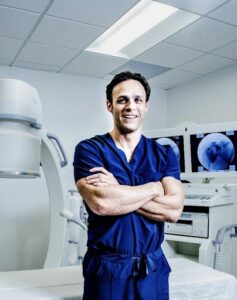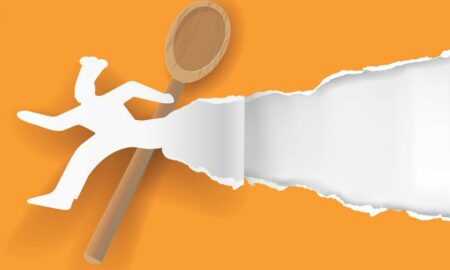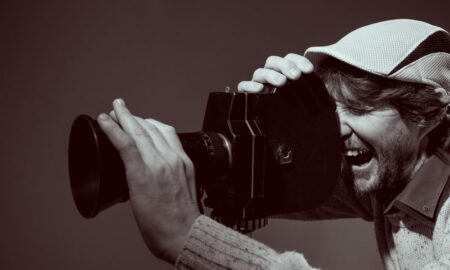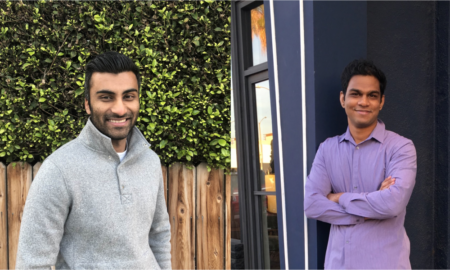
Today we’d like to introduce you to Dr. Aaron Fritts and Anish Parikh.
Alright, so thank you so much for sharing your story and insight with our readers. To kick things off, can you tell us a bit about how you got started?
Aaron Fritts: As an interventional radiology fellow, I was reaching the end of my formal training period as a physician, and I felt like there was a need for a platform where people could share advice and tips on different medical devices. For example, I used specific devices when I trained at Vanderbilt, but afterwards, I worked at different hospitals that used different ones. It took a significant amount of time and effort to learn about the other devices. Anish is a close family friend, and I had a conversation with him about creating this resource for interventional radiology professionals.
Anish Parikh: In 2016, as we were watching a Stars vs. Blues hockey game on TV when Aaron brought up his idea to me. I grew up surrounded by medicine because my brother and parents are all physicians. I thought it was strange how I could probably quickly find an online review of McDonald’s at the hospital, but Aaron could not find reviews about medical devices. I knew that there was probably something to his idea.
For a living, I help people build businesses out of good ideas. My company, TEC Group, helps visionary founders design and build their companies the right way from day one, avoiding the almost inevitable pitfalls of getting started.
Fritts: Anish brought in his developers to create the app, and I brought in my interventional radiology colleagues from Vanderbilt (Drs. Michael Barraza, Bryan Hartley, and Christopher Beck). We got other interventional radiologists to write reviews on devices. However, even though everyone liked the idea of the app, it was hard to get people outside of our network to download and use it. Engagement plateaued after a while.
Parikh: Our original stated premise was to build an app, but I didn’t quite think that an app would work, and I couldn’t exactly figure out why. What resonated with me was an old NPR radio show called Car Talk with hosts Click and Clack. They loved cars and loved helping people, and that came through in their conversations. I liked the idea of doing something like this for docs.
In the medical field, doctors get information about medical procedures using a combination of three methods: conversations with colleagues, textbooks, and Google. Google was especially surprising for me, but it makes sense for doctors to go online to prepare for procedures that they do not normally perform. I saw the need to organize this specific interventional radiology knowledge in a way that people can easily access.
Fritts: I had not originally been familiar with podcasts. The Car Talk analogy sold me on the informal discussion format. I realized that we could keep the same concept as the app, and people could have the chance to verbally share their reviews verbally. We started to invite other doctors in our network onto our show, and they found it very fun.
Parikh: For the first episode, I set up a conference call, recorded their conversation, and used GarageBand to edit. My voice is still used in the intro sequence of each episode, and I hope we can keep that forever as a token from the first episode. I wanted Aaron to use social media more and connect with everyone he knew on LinkedIn and Twitter. We posted the podcast everywhere, and we found that people generally liked the content.
Fritts: I’ve learned a lot about social media. It has many benefits, including the fact that you can learn as you go, it’s free, and you can get valuable audience feedback. Through social media, we were contacted by highly visible doctors who wanted to come on the show and be guest hosts (Dr. Sabeen Dhand and others).
Would you say it’s been a smooth road, and if not what are some of the biggest challenges you’ve faced along the way?
Fritts: It definitely has not been a smooth road. Realizing that the original idea needed to be changed and pivoting toward the podcast was the hardest thing. However, once we realized that we could incorporate our original idea of sharing information between peers with a new communication medium, we became more successful.
We did not realize that our podcast could be our main product until companies started approaching us and asking for us to place their ads into our episodes. They liked our organic growth and our high-quality product. We eventually switched to being a media company. It was a little challenging to shift everyone’s perspective from the app towards the podcast, but we kept working at it and fine-tuning the idea based on audience and team feedback.
Thanks for sharing that. So, maybe next you can tell us a bit more about your work?
Fritts: BackTable is a medical education platform aimed at helping surgical sub-specialists and healthcare workers connect and share intel about procedures, medical devices, and practice-building. The podcast format provides a great vehicle for idea exchange, community building, cross-specialty collaboration, and on-demand learning outside the lecture hall. The great thing about BackTable is it’s always been free for physicians and trainees, and there’s something for everybody: experienced doctors, early-career doctors, trainees, techs, nurses, etc.
A lot of physicians are expected to self-educate after their fellowships end. This is the need that BackTable is serving, kind of like the apprenticeship model of the old days. What has resonated with customers was the authenticity and peer-to-peer nature of the content. Doctors actually listen, engage, and find the show meaningful. Sponsors find this remarkable. Engaging an audience of physicians is especially difficult because of their busy schedules. Other medical education podcasts are trying to market toward this same goal. We don’t have many specific major competitors. We think of ourselves as competing with people’s attention span. We are thinking: what’s going to get our audience members to click on our podcast?
Our listeners tell us that they feel like they are part of the conversation and they’re sitting at the table instead of sitting at a lecture. Our podcast can actually be used as a complementary resource for other medical education resources. We really want to focus on keeping the podcast our own, making it high quality, and responding to our audience’s interests.
Parikh: Yes, authenticity resonates strongly with our audience.
If you had to, what characteristic of yours would you give the most credit to?
Fritts: Teamwork, perseverance, and passion for what we do. As a platform, we’ve now recorded close to 200 episodes across three specialties (interventional radiology, otolaryngology, and urology). This takes a whole team of people, and we are very proud of the team that we’ve put together. One of our core values is to “win as a team.”
Perseverance and the ability to pivot is very important because it helped us arrive at the idea of a podcast. Having a passion for sharing knowledge means that the podcast does not feel like work at all. I try to emphasize this to our team and our guests.
Parikh: Within the medical community, we value collaboration over competition. We invite doctors who care about teaching and learning from others and advancing the field of medicine to ultimately benefit patients.
Fritts: We’re not really focusing on high-profile guests anymore. We invite the ones who are passionate about sharing knowledge and having real conversations.
Contact Info:
- Email: aaron@backtable.com
- Website: www.BackTable.com
- Instagram: @_backtable
- Facebook: BackTable Podcast
- Twitter: @_backtable
- Youtube: https://www.youtube.com/channel/UCiYUCiTAzchTQ6YGm1UHeAw
- SoundCloud: https://soundcloud.com/backtable/tracks
- Other: https://podcasts.apple.com/us/podcast/backtable-podcast/id1448283964















